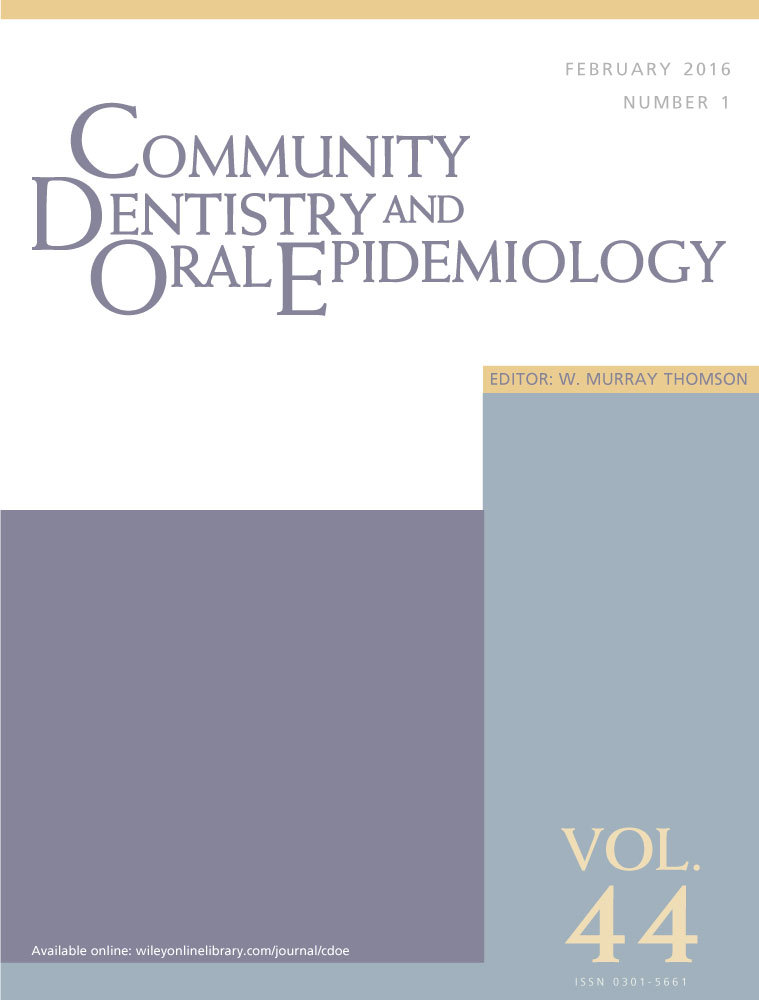Responsiveness and sensitivity of the Early Childhood Oral Health Impact Scale to primary dental care for early childhood caries
Abstract
Objectives
This study examined the responsiveness of the Early Childhood Oral Health Impact Scale (ECOHIS) to dental treatment of early childhood caries (ECC) in a primary dental care setting.
Methods
Parents of children participating in a randomized controlled trial completed the ECOHIS at baseline and follow-up, and rated the global oral health transition of their child at follow-up (‘worsened’, ‘no change’, ‘improved’). Change scores were calculated and longitudinal construct validity assessed by examining the association between change scores and global oral health transition groups. ECOHIS changes from baseline to follow-up within global transition groups were also evaluated. Effect sizes, minimally important difference, and Guyatt's responsiveness index were calculated to examine the scale's sensitivity and responsiveness.
Results
After 11.3 months, complete questionnaire data were available for 189 participants; 59% reported ‘improved’ oral health. The follow-up scores were significantly lower in the child psychology, parental distress and family impact section, P < 0.001, and in the child social interaction, family function and the total ECOHIS scores, P < 0.05, Wilcoxon signed-rank test. There was a significant difference in changed scores among the global transition groups, P < 0.05, Kruskal–Wallis test, and the difference was significant between ‘worsened’ and ‘improved’ groups for the family impact and the total ECOHIS scores, Dunn test, P < 0.05. Effect sizes were small, 0.17, 0.33, 0.30 for the child impact, family impact and total ECOHIS scores, respectively, for those reporting ‘improved’ oral health.
Conclusions
The responsiveness of the ECOHIS to the treatment of ECC in primary dental care settings was modest, and its use to measure treatment effects in primary care settings requires further investigations.




